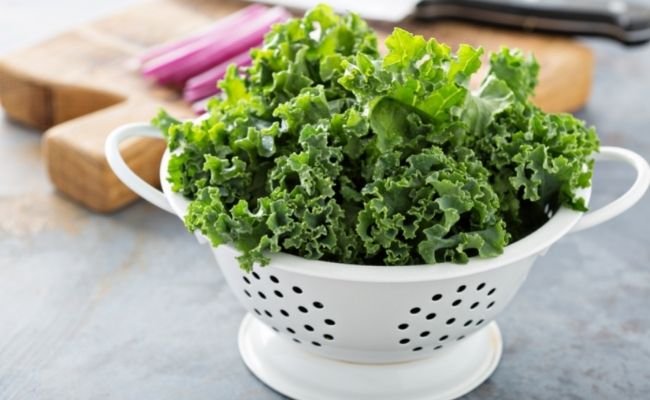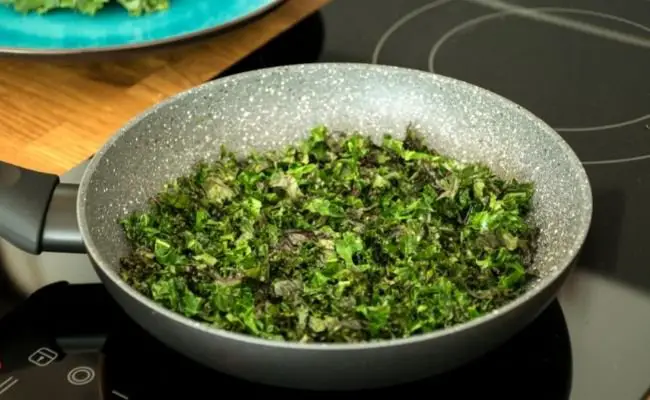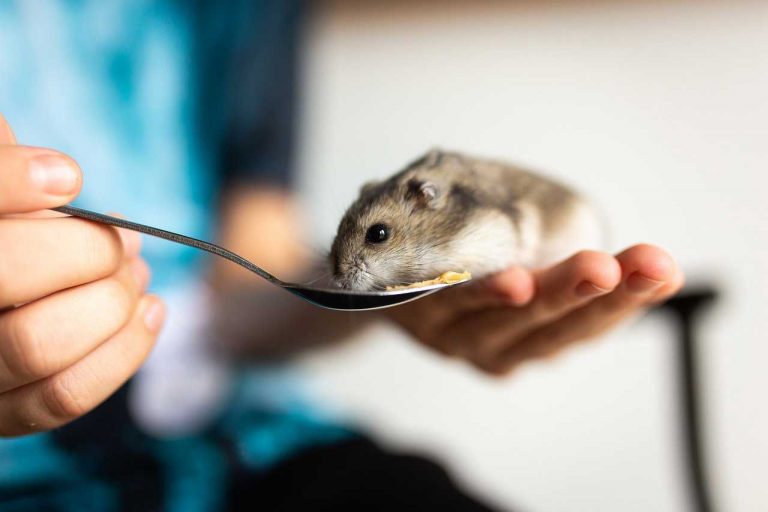Can Hamsters Eat Kale? Breeds To Avoid Kale
If you have a hamster, you will agree with me that one of the greatest puzzles is deciding what to feed your pet each time. Hamsters are picky eaters, so they do not readily accept or recognize all kinds of food. Actually, their diet should be planned for them up to the smallest detail.
And while some vegetables such as cabbage, carrots, cucumbers, broccoli, and more are safe for their consumption, we still have a few that can cause fatal repercussions to our little furry friends. And could it be that kale is one of them?
Can hamsters eat kale? Yes, some hamsters can eat kale but with a few considerations. Kale contains lots of essential nutrients necessary for their health. However, just ensure that you do things right when it comes to preparation and the amount of kale they should take.
All About Kale
I know that you are eager to read more about whether or not this special vegetable is good for your pet, but first, here is a little info about the food.
Kale, scientifically known as Brassica oleracea, is a leafy green vegetable that belongs to the cruciferous vegetable group which also includes broccoli and cauliflower.
It has a mild and nutty taste that makes it an ideal ingredient for cooking different types of dishes such as soups and stews.
Since it belongs to the cabbage family (the same family as broccoli, cauliflower, and Brussels sprouts), it is low in calories. So, if you are on a strict diet or just want to keep that extra weight off, then kale can help you achieve this goal.
And now to the core business of the day…
What Hamster Breeds Can’t Eat Kale?

If you were keen enough with your reading, you may have noticed that I already said that only “some” hamster breeds can eat kale.
Could it be that your species of hamster is among those that should not eat kale? Well, that’s where we are headed…
Hamster breeds that shouldn’t eat kale are Russian Campbell Dwarf hamsters, Chinese hamsters, Hybrid (Russian Campbell and Winter White) hamsters, and some Winter White Dwarf hamsters.
If you have any of these hamsters, be extremely careful about feeding them kale. Or better yet, you can just avoid it for their sake and yours as well.
Here is why…
Why Breeds Of Hamsters Shouldn’t Eat Kale
The selection of what breeds should eat kale and what shouldn’t doesn’t seem to be based on any criteria, right? Well, not exactly…
There’s something common about all the mentioned hamster breeds, and that’s what keeps them from eating kale– they are at a higher risk of getting diabetes compared to other hamster breeds.
“Kale and diabetes?”, you may wonder. However, the fact remains that kale can greatly increase glucose levels in hamsters when consumed.
This greeny healthy vegetable contains some amounts of sugar in it. Of course, we all know that sugar is responsible for the rise in insulin and glucose levels, not just in human beings but also in almost any animal you can think of, including hamsters!
Due to this fact, kale can do more harm than good when fed to diabetic hamsters or those with a higher likelihood of developing the condition.
One way of ensuring that your hamster friend does not develop diabetes is by avoiding giving them kale and any other food that can cause a spike in blood sugar
What Hamster Breeds Can Eat Kale?
Before we even sink deeper to examine that, it’s worth knowing that any hamster breed can develop diabetes. However, some breeds are more at risk than others.
Just keep in mind that there is still a chance that they could develop it, and one of the reasons you should never exceed the recommended levels.
So, what breeds are allows to eat kale?
Syrian hamsters, Roborovski dwarf hamsters, and some lines of Winter White Dwarf hamsters are allowed to eat kale. So if your pet doesn’t fall under any of these categories, then it is best not to risk giving them kale at all.
You might have noticed that Winter White Dwarf hamsters fall in both the “allowed” and “not allowed” lists.
And yes, that’s not a mistake!
We have some Winter White Dwarf hamsters that are more prone to diabetes than others. And since it’s not easy for you to know the exact line your hamster is from, this means that you should assume that yours could fall under the “not allowed” list.
Again, if you don’t know what your breed is, or if you aren’t sure they can handle kale, avoid giving it to them. Assume that your hammy belongs to the category of hamsters which are a no-no for kale.
So, if your breed falls under any of these allowed categories, give them kale with caution! Monitor their activity and eating patterns to detect any changes in behavior. If you observe even slight abnormalities or signs of possible illness, do not hesitate to take your pet to the vet!
Nutrition Stats of Kale

You don’t want to give your pet kale just for the sake of it, do you?
Of course not!
What you are looking for is the nutritional content in kale. Below is a list of the most common nutrients found in kale, and their quantities per 100 grams.
- Calories- 28
- Carbohydrates- 5.8g
- Dietary Fiber- 2g
- Protein- 2g
- Sugar- 2.3g
- Fat- 0.5g
- Iron- 3mg
- Potassium- 428mg
- Sodium- 28mg
- Copper 1.8 mg
- Magnesium 32mg
- Calcium- 135mg
As you can see, kale is a rich source of many nutrients, which is what makes it so good for your hamster.
However, this list also shows why kale can be potentially harmful if consumed by diabetic or high-risk hamsters.
So, if you are planning on including kale in your pet’s diet, make sure they are healthy enough to handle any changes related to consumption.
Nutrition Value Of Kale
From nutritional “stats” to nutritional “value”…
Sure, there are many nutrients in kale. Let’s get deep into them and see what they do.
Kale is a good source of vitamins A, C, and K– all of which are essential for hamster health. There is also some phosphorus content in kale, which offers numerous health benefits to hamsters.
Vitamin A is very important as it keeps the skin healthy, makes their eyesight better, and even helps with reproduction.
Vitamin C has several health benefits such as boosting the immune system, and it also helps with healthy skin and eyesight. And who doesn’t want healthy eyes in their pet?
Not to mention, vitamin K is essential for blood coagulation and maintenance of bones and tissues. So it’s basically the superman of the vitamins.
What about dietary fiber and sugar? Well, just like we said before, they’re not exactly great for diabetic hamsters. While the quantity is quite low, even the lowest sugar content in kale can pose a potential threat, especially when giving your pet repeatedly.
Iron, magnesium, and calcium are all great for your hamster’s bones and metabolism. Magnesium even helps with enzymes in the body, while iron is important for the formation of hemoglobin. However, you might have noticed that their quantity is high compared to copper and sodium.
This doesn’t mean that the amount of these minerals is too high. It just means that there are more than one mineral in kale, and their individual quantities aren’t high enough to be harmful for your hamster.
There you have it!
What Amount of Kale Should I Give To My Hamster?
You should only be reading this section to apply only if you are sure your breed doesn’t appear anywhere on the not allowed list.
So, if you are sure your breed is fine with kale, and you want to know what you should give them:
Small amounts will do…
But I know that’s not what exactly you wanted to hear, let me break it down to finer details!
The rule of the thumb is that you feed your hamster a kale leaf the size of their head. This will not cause any potential damage to your pet, though it might take them some time to finish the leaf.
And no matter how your hamster seems to love the idea of feeding them kale, don’t overdo it. Only give them the leaf for a day or two, and then take it out of their diet list.
I tell this for your own good! Your hamster might look healthy and happy, but do not forget that they are still fragile and vulnerable– so treat them with care!
How Often Should Hamster Feed Kale?
To this point, I believe you already know more about kale and whether or not it’s safe for your hamster species. You also know the right quantity for your hammy. However, one area still remains.
How often should your hamster snack on the healthy leaf? If you ask me, I say: not too often!
I know that sounds like a sad excuse to keep them away from their favorite food, but hear me out. By feeding kale daily, we are risking potential health risks and long-term damage for our pets.
This doesn’t mean that you can’t feed them kale ever again; instead, consider it as a “once in a while” snack for hamsters. Only don’t give it more than twice a week and as a supplement to their regular diet!
What Happens When You Overfeed Hamsters Kale?
I’m hoping that you reading this section doesn’t mean that you will overfeed or have overfed your hamster kale- but what if it happened?
Luckily, it’s very unlikely that kale will bring your hamster sickness. However, let me guide you through the possible consequences which I’m sure everyone wants to avoid!
As you probably guessed, an excess amount of vitamins can cause problems. For example, vitamin A is fat-soluble, so in case there’s too much of it, it can build up in their liver which will cause yellowing of eyes and skin. But don’t worry, this is unlikely to happen since the amount of vitamin A in kale isn’t that high anyway.
Too much kale will give your hamster diarrhea or cause digestive issues such as bloating or upset stomach. And that is not something you would want your little buddy to go through!
Again, the high water content and the level of acidity in kale leaves may bring your hamster digestive issues.
And while your pet may not develop diabetes from one or two occurrences of overfeeding them kale, keep in mind they slowly become more prone to it the more you feed them. So try to avoid this scenario as much as you can!
Should Hamsters Eat Raw or Cooked Kale?

While some Veggies such as potatoes work best for hamsters when cooked, kale should always be given raw.
Did you mark “ALWAYS” in red? Remember that, dude!
Here is why:
Cooked kale tends to attract more digestive issues in your hamster, as the fibers become less dense. In addition, some nutrients such as Vitamin A or potassium can lose their effectiveness when cooked!
And that means…
If you want to give your hamster this treat, always remember it only serves as a safe vegetable when in raw form.
Can Hamsters Eat Kale Stems?
While they aren’t harmful to hamsters, they can be quite hard for them to chew. However, you can try and give them 1/2 an inch kale stem and see how your pet reacts to it. Only remember to wash it thoroughly with clean fresh water to remove any pesticides or chemicals, and give it to them raw.
Can Hamsters Eat Dried Kale?
Yes, it’s okay to feed your pets dried kale. However, just like with any other food you give your hamster, make sure to monitor the amount they consume so it doesn’t affect their diet.
Once again, never overfeed your precious pet! Hamsters are fragile animals and there is nothing more you would want than keep them healthy and happy.
Can A Baby Hamster Eat Kale?
No, kale should only be given to an adult hamster. Baby hamsters have a more delicate digestive system that may not be able to digest the fiber naturally found in kale.
Final Verdict:
If you have a Syrian hamster or Roborovski hamster, there is no reason why your hamster should be kept from the leafy goodness unless they are already diabetic. And even if they are good to eat, always give kale in moderation.
If your hamster is among those that shouldn’t eat kale, consider other safe treats. Choose other veggies such as spinach, which have an almost similar range of health benefits but low sugar content.






![Can Hamsters Be Fat? [Keep Them Healthy!]](https://atractivopets.com/wp-content/uploads/2020/11/Hamster-768x511.jpg)
![Are Hamsters Hypoallergenic? [The Truth!]](https://atractivopets.com/wp-content/uploads/2020/12/Play-With-Your-Hamster-768x511.jpg)